The whole point of the axes_divider is to divide the axes to make space for a new axes. This ensures that all axes have the same surrounding box. And that is the box you see being printed.
Some of the usual ways to create a colorbar, at a certain location in the figue are shown in this question. Here the problem seems to be to be able to call tight_layout. This is achievable with the following two options. (There might be others still.)
A. using gridspec
I'm not too sure about the exact requirements here, but it seems that using a normal grid layout would be more in the direction of what you need here.
import numpy as np
import matplotlib.pyplot as plt
import matplotlib.gridspec as gridspec
fig = plt.figure()
gs = gridspec.GridSpec(2, 2, width_ratios=[95,5],)
ax = fig.add_subplot(gs[:, 0])
im = ax.imshow(np.arange(100).reshape((10,10)))
cax = fig.add_subplot(gs[1, 1])
fig.colorbar(im, cax=cax, ax=ax)
plt.tight_layout()
plt.show()

B. Using axes_grid1
If you really need to use axes_grid1, it might become a little bit more complicated.
import matplotlib.pyplot as plt
import matplotlib.axes
from mpl_toolkits.axes_grid1 import make_axes_locatable, Size
import numpy as np
fig, ax = plt.subplots()
im = ax.imshow(np.arange(100).reshape((10,10)))
divider = make_axes_locatable(ax)
pad = 0.03
pad_size = Size.Fraction(pad, Size.AxesY(ax))
xsize = Size.Fraction(0.05, Size.AxesX(ax))
ysize = Size.Fraction(0.5-pad/2., Size.AxesY(ax))
divider.set_horizontal([Size.AxesX(ax), pad_size, xsize])
divider.set_vertical([ysize, pad_size, ysize])
ax.set_axes_locator(divider.new_locator(0, 0, ny1=-1))
cax = matplotlib.axes.Axes(ax.get_figure(),
ax.get_position(original=True))
locator = divider.new_locator(nx=2, ny=0)
cax.set_axes_locator(locator)
fig.add_axes(cax)
fig.colorbar(im, cax=cax)
plt.tight_layout()
plt.show()



